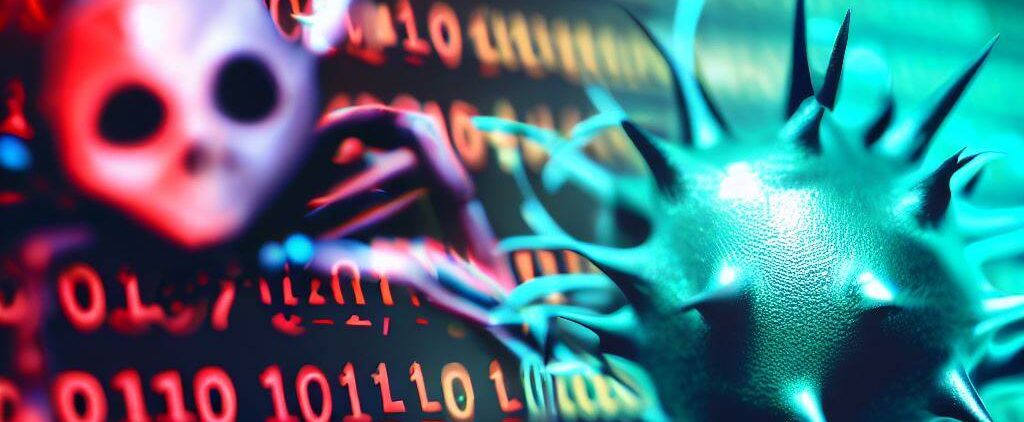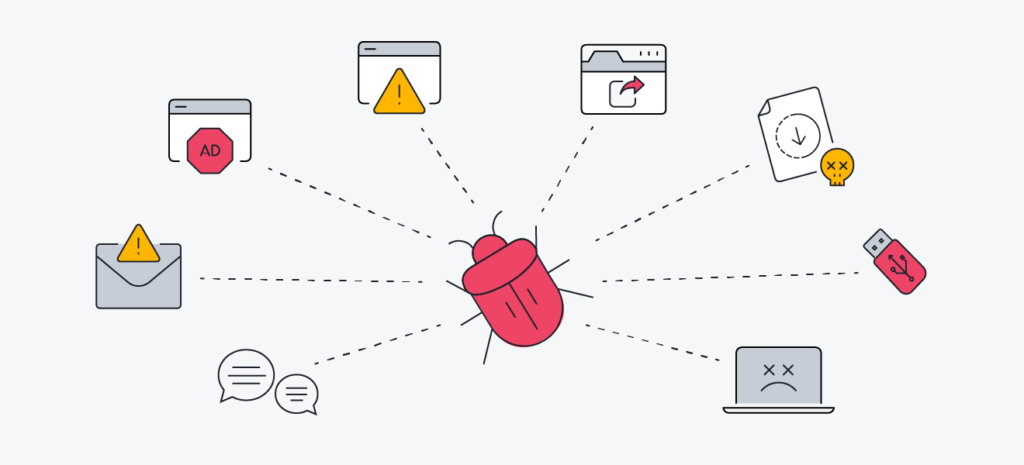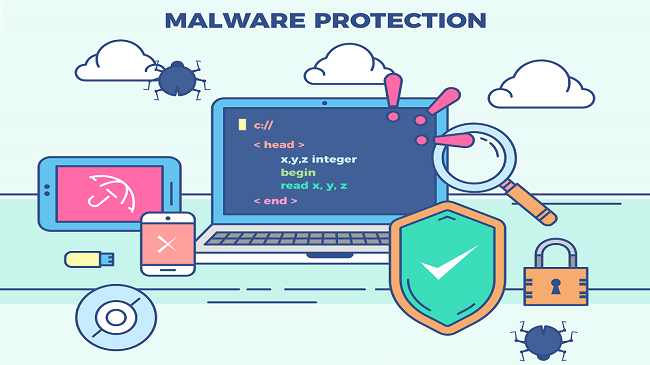
Introduction
In this article, we are specifically going to see how to protect your computer from malware and viruses because, In today’s digital age, the security of our computers and devices is of utmost importance. malware viruses pose significant threats to our personal information, sensitive data, and the overall performance, of our devices to guard your computer and ensure a safe online experience, it is crucial to implement effective security measures, in this comprehensive guide we will explore various strategies and best practice to protect your computer from malware and viruses.
How malware and viruses occur

- Email Attachments: One of the most common methods is through malicious email attachments. Cybercriminals may send emails with infected files, such as Word documents, PDFs, or executable files, enticing users to open them. Once opened, the malware gains access to the system.
- Infected Websites: Malicious software can also be spread through compromised websites. Cyber attackers inject harmful code into legitimate websites, and when users visit these sites, their computers may become infected.
- Phishing Attacks: Phishing emails or messages often contain links to fraudulent websites designed to trick users into providing sensitive information like login credentials or personal data. In some cases, these websites may deliver malware directly to the user’s device.
- Drive-by Downloads: Drive-by downloads occur when malware is automatically downloaded to a user’s computer without their knowledge or consent, often when they visit a compromised website.
- Infected Software: Cybercriminals can infect legitimate software installers or updates with malware and distribute them through unofficial channels. When users download and install these infected files, the malware gains access to the system.
- Removable Media: USB drives and other external storage devices can carry malware. When users connect infected external media to their computers, the malware may spread to their systems.
- Social Engineering: Malware can also be distributed through social engineering tactics. For instance, cybercriminals may deceive users into running harmful scripts or granting administrative access to their systems.
- File Sharing Networks: Malware can lurk in files shared through peer-to-peer (P2P) file-sharing networks. Users who download and open these files might inadvertently infect their devices.
- Software Vulnerabilities: Malware creators actively search for weaknesses in software, operating systems, or applications. They exploit these vulnerabilities to deliver malware to vulnerable systems.
- Botnets: Some malware operates within a network of compromised computers, forming a botnet. The malware infects multiple devices and can be used for various malicious activities, such as Distributed Denial of Service (DDoS) attacks.
Way to protect your computer from malware and viruses

here are the top 9 methods that you can implement
Keep your system and software updated
Regular updating of your operating system and software is vital to maintaining a safe IT environment. developers frequently use release updates that fix security vulnerabilities and strengthen defences against malware and viruses. to ensure your operating system and application are updated automatically, either enable automatic updates or manually check for updates regularly.
Install a reliable antivirus and malware
Choose and install a reputable anti-virus and and malware solution on your computer, such programs are intended to detect, block and remove malware. make sure to periodically update your antivirus software to stay in touch with the latest threats. regular system scans are necessary to identify and eliminate any potential infections. exercise caution with email attachments and links.
email is a common method for spreading malware. be careful when opening email attachments or clicking on links, especially with unknown senders or suspect sources. avoid uploading attachments or clicking on links that seem suspect, and never provide personal information when responding to an unsolicited e-mail.
Enable firewall protection
Enable and set up the firewall on your computer. (i) A firewall acts as a barrier between your computer and the internet, monitoring inbound and outbound network traffic to block unauthorized access. (ii) offers an additional layer of protection against malware and intrusions.
Practice safe browsing habits
Exercise caution while browsing the internet to minimize the risk of encountering malware follow these guidelines.
a. use a well-known web browser that has built-in security features.
b. avoid clicking on suspect advertisements or banners.
c. regularly clear your browser cache and cookies
d. be careful when downloading files from the internet, and only from reputable sources.
Implement strong passwords
Passwords are an essential element of computer security. use strong, unique passwords for all of your online accounts and avoid using easy-to-guess information, consider using a password manager for secure and management of your passwords.
Be wary of social engineering attacks
Malware can also be delivered using social engineering techniques. be cautious and sceptical of any unexpected phone calls or emails that request personal or financial information. avoid sharing personal information online and avoid oversharing on social media platforms.
Regular data backup
Frequently backup important files and data to an external storage device or cloud-based service, if malware infection or system failure occurs, having backups ensures that you can restore your files and minimize data loss.
Enable two-factor authentication (2FA)
Two-factor authentication adds an extra layer of security to your online accounts it requires providing or additional verification code typically sent to your mobile device when logging in enabled wherever possible to enhance your account security.
Stay informed and educated
Stay informed about the latest security trends emerging threats and best practices. visit reputable cyber websites regularly and subscribe to security bulletins to stay up-to-date on potential risks and ways to mitigate them.
Conclusion:
Protecting your computer from malware and viruses is a critical responsibility in today’s digital landscape. By following the strategies and best practices outlined in this comprehensive guide, you can significantly reduce the risk of infections and ensure a secure computing environment, remember proactive measures such as keeping your software updated, using reliable security software, practising safe browsing habits, and staying informed will help safeguard your computer and personal information from malicious threats. stay vigilant, take the necessary precautions and enjoy a safe and secure online experience.
more article